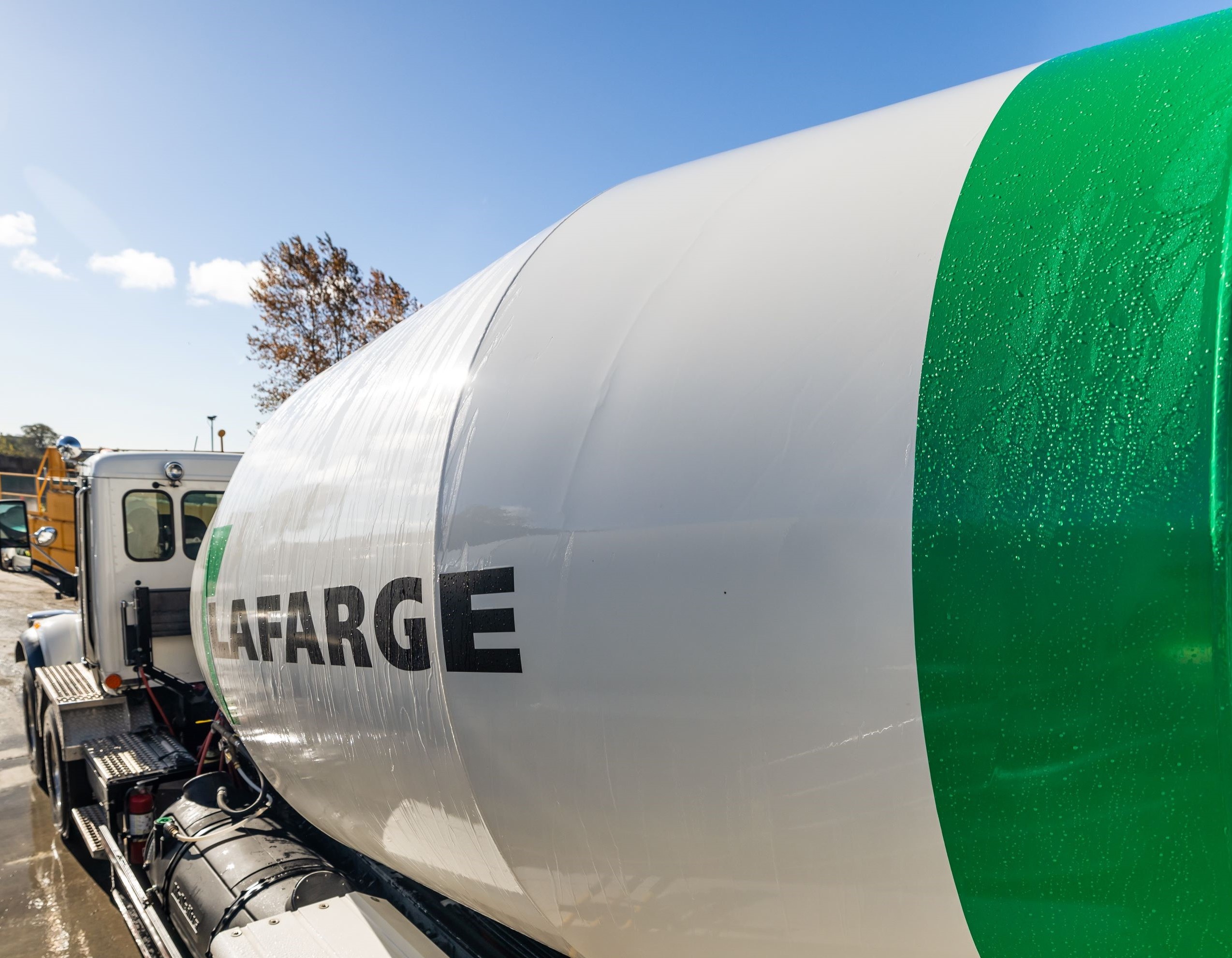Lafarge approved to operate rear-steer axle trailers in Alberta
The technology allows for a 30% increase in concrete carrying capacity, keeping more trucks off the road.

Key Takeaways:
- Lafarge Canada has received provincial approval in Alberta to operate hydraulically steered concrete delivery trailers, following a successful pilot program. This marks a significant update to Alberta’s Traffic Safety Act and showcases effective collaboration between industry and government.
- The new rear-steer axle trailers allow for a 30% increase in concrete carrying capacity—up from 8.5 to 11 cubic metres—while improving maneuverability. This innovation reduces the number of trucks needed, lowers emissions, and enhances both safety and delivery reliability.
- Lafarge’s success has sparked national interest, with other provinces preparing similar pilot programs in 2025. The company plans to deploy more of these advanced trailers as part of its broader Transportation Roadmap focused on modernizing logistics and reducing environmental impact.
The Whole Story:
Lafarge Canada has received provincial approval to operate trailers equipped with hydraulically forced steering axles for concrete delivery in Alberta, marking a significant milestone in transportation innovation and regulatory modernization. This advancement follows a successful multi-year pilot in Calgary and Edmonton and marks an update to Alberta’s Traffic Safety Act, intended to benefit all sectors involved in the transportation of goods.
“This approval showcases how innovative technologies can revolutionize logistics and deliver real benefits to our customers by boosting efficiency,” said David Schmidt, fleet manager, Lafarge Canada. “With rear-steer axle trailers, we’re able to transport more materials with better maneuverability, resulting in smarter, safer, and more reliable service.”
Conventional mixer trucks carry 8.5 cubic metres of concrete. While trailers have been used for some time to carry 11 cubic metres, maneuverability concerns have limited their adoption. With the introduction of these new trailers, Lafarge has effectively removed these barriers and can capture a 30% increase in capacity across all fleets. This improvement enables the company to reduce the number of trucks on the road, cut emissions, and enhance both efficiency and safety.
Lafarge stated that this achievement reflects a collective effort between industry and government. David Schmidt and Andrew Barnes from the Alberta Motor Transportation Association (AMTA) guided the regulatory process, engaging Alberta Transportation and Economic Corridors and the province’s Transport Engineering group. With formal endorsement from the Minister of Transportation and Economic Coordinators, Devin Dreeshen, and the support of Andrew Pillman’s team at Alberta Transportation, the initiative obtained legislative approval.
While the regulations were being shaped, Lafarge worked closely with technical experts to bring the pilot project to life. Precision Mixers assembled the specialized trailers, Simard Suspensions holds exclusive rights to the forced steering axle technology, and VSE delivered the steering control system.
Over an 18-month trial in real-world conditions, Lafarge validated the system’s performance with the help of Calgary-based driver Ron Labine and Edmonton-based driver Volodymyr Dushenko. The success led to municipal approvals in Calgary and Edmonton before the province-wide green light.
Though the approval is Alberta-specific, Lafarge’s leadership in this space has sparked interest across Canada. Additional provinces are preparing pilot programs in 2025, signaling strong potential for broader adoption.
As part of its Transportation Roadmap, Lafarge will introduce two more rear-steer trailers this year, with further investments planned to support modernized equipment, emissions reduction, and high-performance delivery solutions.
“This project is a prime example of what’s possible when industry and government work together with a shared focus on innovation,” said Ian Paine, director, Ready-Mix Performance, Lafarge Canada. “It’s a win for logistics, infrastructure, and most importantly, the communities we serve.”
